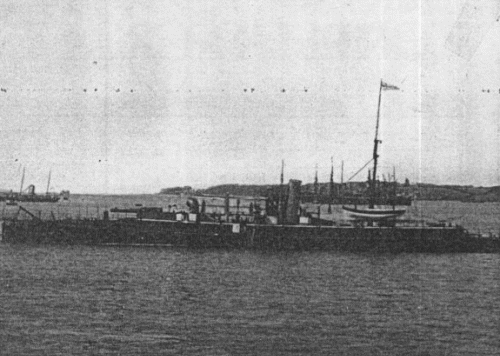
NAVYPEDIA
 Support the project with paypal
Support the project with paypal
Photo

Brummer 1888
Ships
| Name | No | Yard No | Builder | Laid down | Launched | Comp | Fate |
|---|---|---|---|---|---|---|---|
| Brummer | 52 | Weser, Bremen | 1883 | 5.1.1884 | 10.1884 | fishery protection 1891-1894, hulk 5.1907 | |
| Bremse | 53 | Weser, Bremen | 1883 | 29.5.1884 | 12.1884 | store hulk 3.1903 |
Technical data
| Displacement normal, t | 867 |
|---|---|
| Displacement full, t | 929 |
| Length, m | 64.8 oa 62.6 wl |
| Breadth, m | 8.50 |
| Draught, m | 4.77 |
| No of shafts | 1 |
| Machinery | 2 DC, 2 locomotive boilers |
| Power, h. p. | Brummer: 1658 Bremse: 2081 |
| Max speed, kts | Brummer: 14.1 Bremse: 15.2 |
| Fuel, t | coal 68 |
| Endurance, nm(kts) | 1370(10) |
| Armour, mm | compound; breastwork: 160, deck: 40 - 25 |
| Armament | 1 x 1 - 209/28 RK L/30 C/84, 1 x 1 - 87/22 RK L/24 C/82, 2 x 5 - 37/27 RV L/30, 1 - 350 TT |
| Complement | 65 - 78 |
Standard scale images

Brummer 1895
Graphics
Project history
Another approach to the one-gun gunboat idea, longer, lighter and less well armoured than the Wespe class, but also intended for coastal defence. Their main protection was a 160mm bulkhead to shelter them from end-on fire. They were good seaboats.
Ship protection
There were 160mm bulkhead protected the main gun from end-on fire, backed by 200mm wood. Armoured deck was 25mm amidships and 40mm aft.
Modernizations
1900s, Brummer: - 2 x 5 - 37/17, 1 - 350 TT
Naval service
Brummer started life as the flagship of the torpedo forces, later being allocated to fishery protection, and later still being used as a weapons and machinery school. She was not broken up until 1922. Her sister was converted to an oil barge, and sold in this role in 1910.
 HOME
HOME FIGHTING SHIPS OF THE WORLD
FIGHTING SHIPS OF THE WORLD GERMANY
GERMANY OTHER FIGHTING SHIPS
OTHER FIGHTING SHIPS BRUMMER armoured steamships (1884)
BRUMMER armoured steamships (1884)
